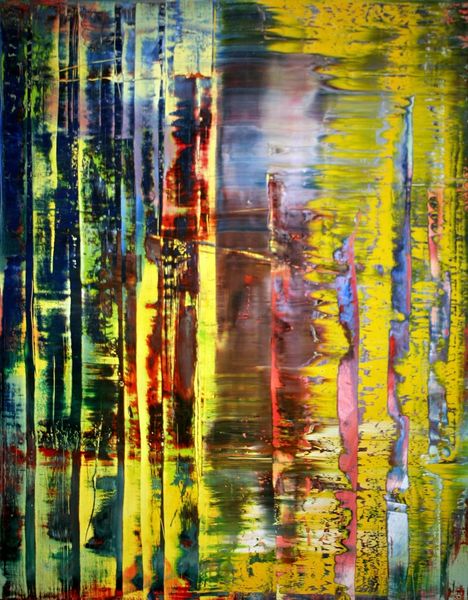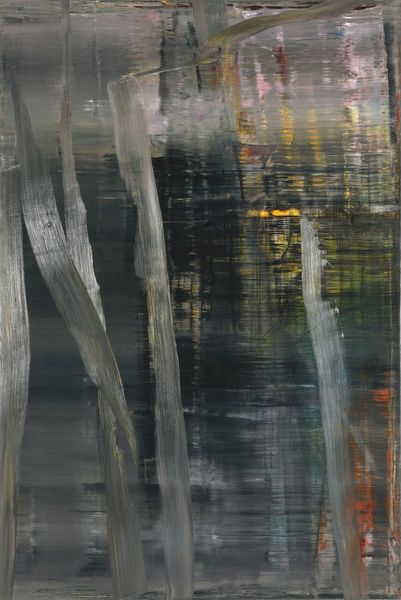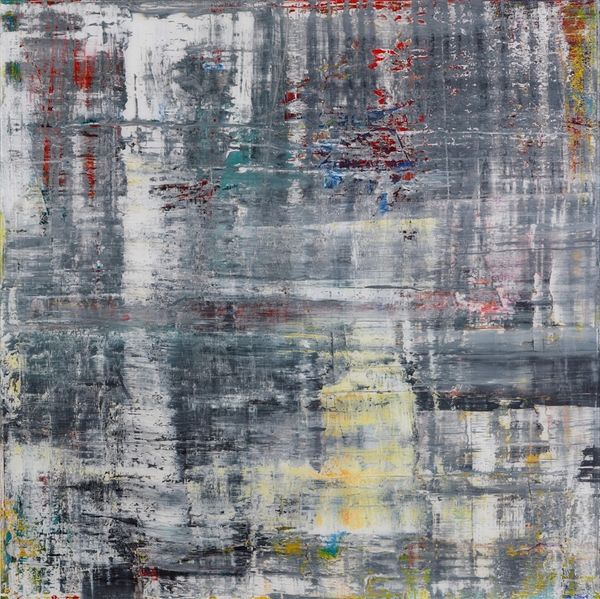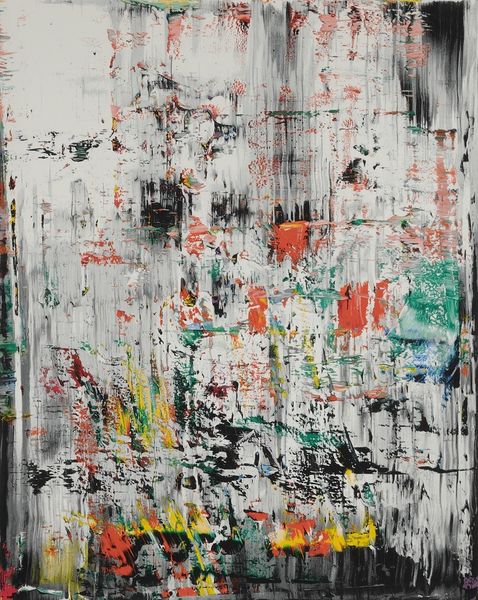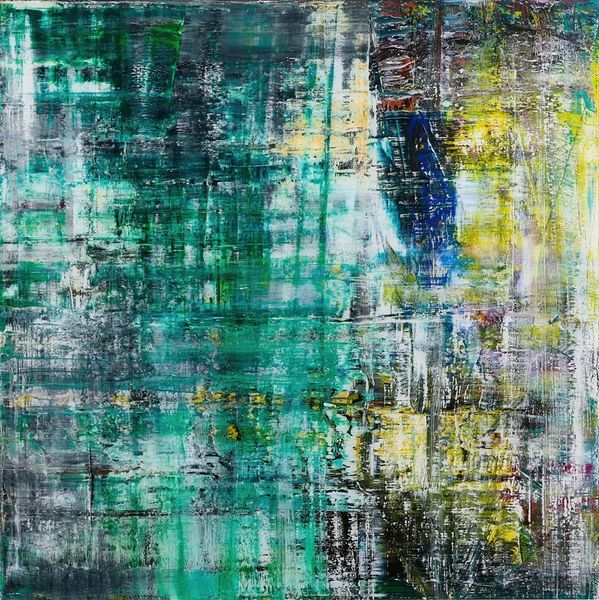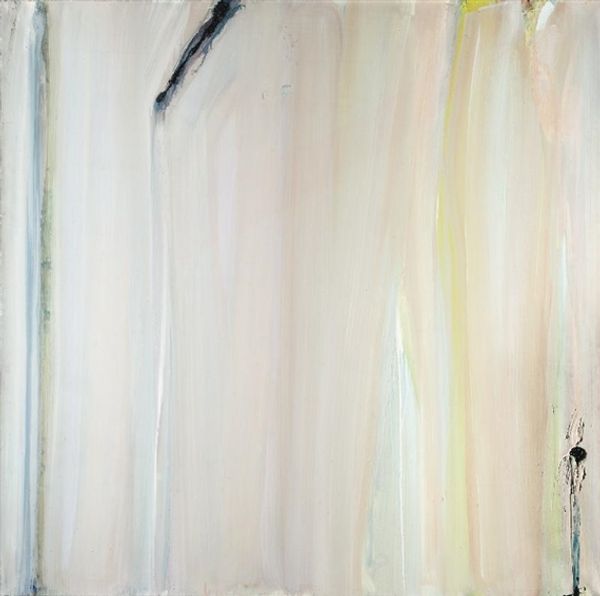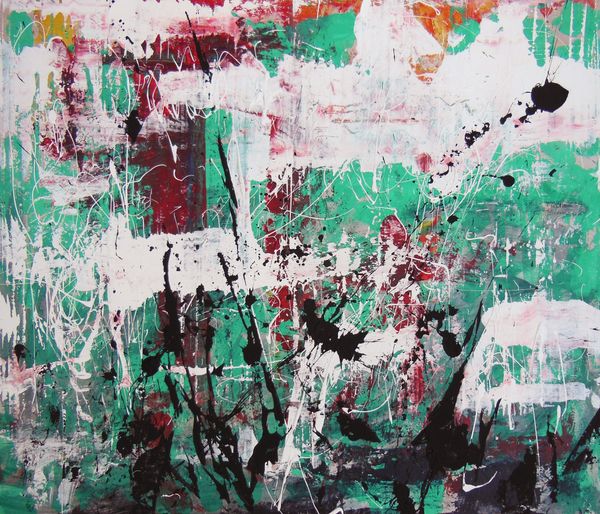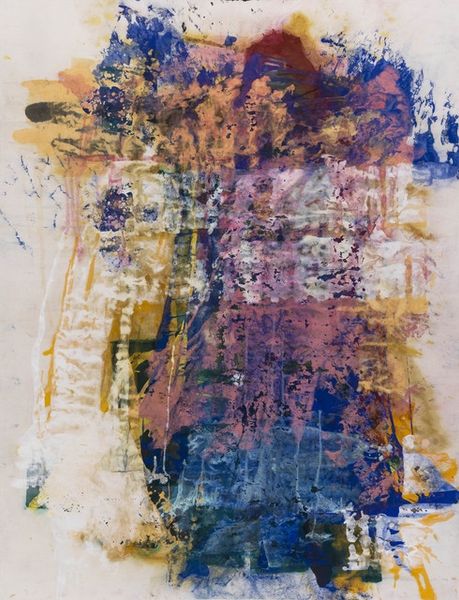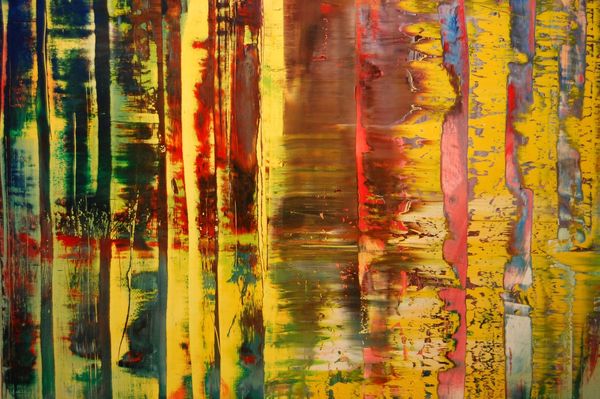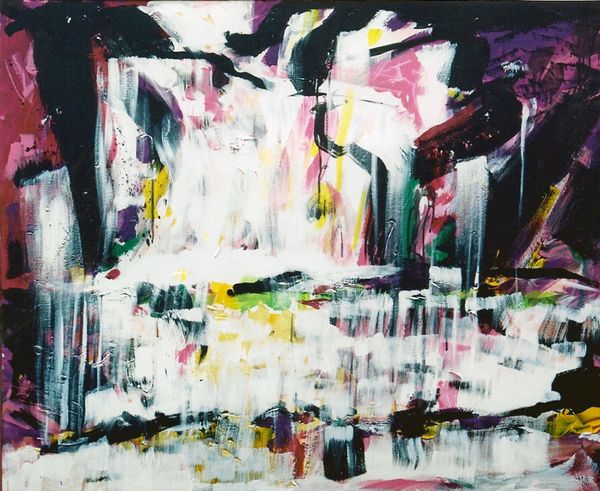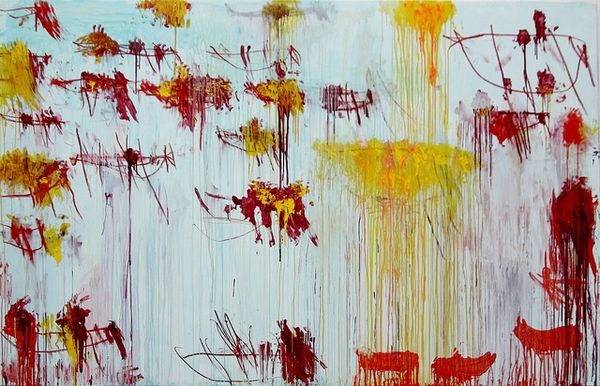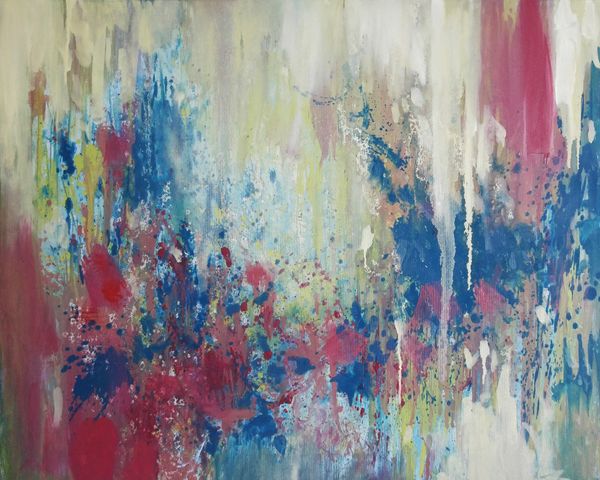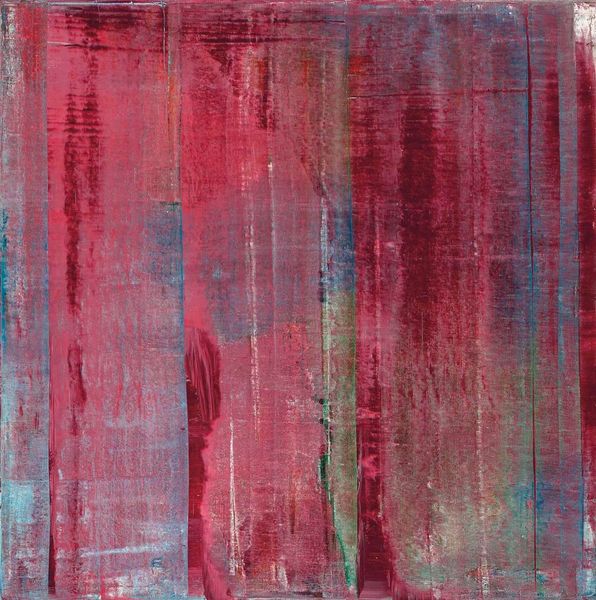
#
capitalist-realism
Copyright: Modern Artists: Artvee
Editor: We're looking at Gerhard Richter's "Haggadah" from 2014. It’s an acrylic on canvas piece, and what strikes me immediately is the way the paint seems to cascade down the canvas. How can we even begin to interpret something like this? Curator: As a materialist, I think the crucial element here is to focus on Richter's process. What kind of tools might he have used to achieve this particular texture and what do the different application methods signal to you? Editor: Well, the impasto suggests a layering, and the long streaks could indicate a squeegee or a similar tool pulled across the surface. But what does this action mean? Curator: Think about the labour involved. The squeegee flattens and distorts, almost erasing what's underneath. Consider this process within the context of postwar German art. Richter is actively engaging with, and arguably dismantling, the traditional role of the artist. Are we seeing a deconstruction of "high art"? Editor: That's fascinating. So the *act* of making, the physical manipulation of the paint, becomes the subject itself? Could this also critique the art market, focusing on materiality over conventional subject matter? Curator: Precisely. Richter's materials and method become a form of social commentary. It forces us to question what we value in art: skill, representation, or perhaps the evidence of labour itself? It begs the question: What and whom does all this laborious deconstruction serve? Editor: I see now; by emphasizing the process, Richter shifts the focus from the artist's vision to the material realities and economic implications of art production. I'll definitely look at abstract expressionism differently now. Curator: Indeed, by looking at the "how" we start understanding the "why," shifting attention to material and the processes embedded in artistic production can really offer invaluable new meanings.
Comments
No comments
Be the first to comment and join the conversation on the ultimate creative platform.
